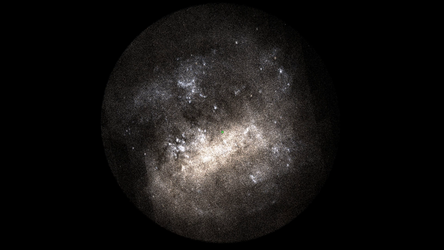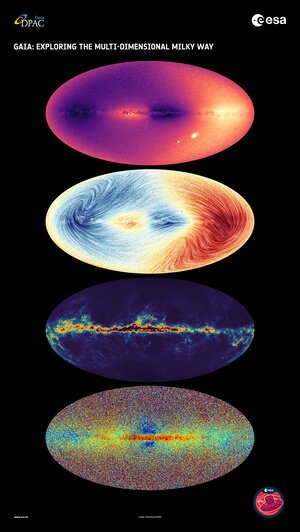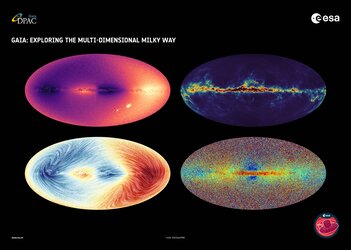Accept all cookies Accept only essential cookies See our Cookie Notice

About ESA
The European Space Agency (ESA) is Europe’s gateway to space. Its mission is to shape the development of Europe’s space capability and ensure that investment in space continues to deliver benefits to the citizens of Europe and the world.
Highlights
ESA - United space in Europe
This is ESA ESA facts Member States & Cooperating States Funding Director General Top management For Member State Delegations European vision European Space Policy ESA & EU Space Councils Responsibility & Sustainability Annual Report Calendar of meetings Corporate newsEstablishments & sites
ESA Headquarters ESA ESTEC ESA ESOC ESA ESRIN ESA EAC ESA ESAC Europe's Spaceport ESA ESEC ESA ECSAT Brussels Office Washington OfficeWorking with ESA
Business with ESA ESA Commercialisation Gateway Law at ESA Careers Cyber resilience at ESA IT at ESA Newsroom Partnerships Merchandising Licence Education Open Space Innovation Platform Integrity and Reporting Administrative Tribunal Health and SafetyMore about ESA
History ESA Historical Archives Exhibitions Publications Art & Culture ESA Merchandise Kids Diversity ESA Brand Centre ESA ChampionsLatest
Space in Member States
Find out more about space activities in our 23 Member States, and understand how ESA works together with their national agencies, institutions and organisations.
Science & Exploration
Exploring our Solar System and unlocking the secrets of the Universe
Go to topicAstronauts
Missions
Juice Euclid Webb Solar Orbiter BepiColombo Gaia ExoMars Cheops Exoplanet missions More missionsActivities
International Space Station Orion service module Gateway Concordia Caves & Pangaea BenefitsSpace Safety
Protecting life and infrastructure on Earth and in orbit
Go to topicAsteroids
Asteroids and Planetary Defence Asteroid danger explained Flyeye telescope: asteroid detection Hera mission: asteroid deflection Near-Earth Object Coordination CentreSpace junk
About space debris Space debris by the numbers Space Environment Report In space refuelling, refurbishing and removingSafety from space
Clean Space ecodesign Zero Debris Technologies Space for Earth Supporting Sustainable DevelopmentLatest
Applications
Using space to benefit citizens and meet future challenges on Earth
Go to topicObserving the Earth
Observing the Earth Future EO Copernicus Meteorology Space for our climate Satellite missionsCommercialisation
ESA Commercialisation Gateway Open Space Innovation Platform Business Incubation ESA Space SolutionsLatest
Enabling & Support
Making space accessible and developing the technologies for the future
Go to topicBuilding missions
Space Engineering and Technology Test centre Laboratories Concurrent Design Facility Preparing for the future Shaping the Future Discovery and Preparation Advanced Concepts TeamSpace transportation
Space Transportation Ariane Vega Space Rider Future space transportation Boost! Europe's Spaceport Launches from Europe's Spaceport from 2012Latest

Rotation of the Large Magellanic Cloud
Thank you for liking
You have already liked this page, you can only like it once!
Last week the much-awaited second slew of data from ESA’s Gaia mission was released, providing information on a phenomenal 1.7 billion stars – the richest star catalogue to date.
To put that vast number into context, if you were to count ‘only’ to one billion at a rate of one count per second, it would take more than 30 years. The new data will surely keep astronomers busy for even longer.
The dataset has already revealed fine details about the make-up of the Milky Way’s stellar population and about how stars move, essential information for investigating the formation and evolution of our home Galaxy.
The treasure trove of data also includes information about stars beyond our own Galaxy. One example is illustrated in this image, which focuses on one of the nearest galaxies to our Milky Way, the Large Magellanic Cloud, or LMC.
This image combines the total density of stars detected by Gaia in each pixel with information about the proper motion of stars – their velocity across the sky – which is represented as the texture of the image, giving it a fingerprint-like appearance.
Measuring the proper motion of several million stars in the LMC, astronomers were able to see an imprint of the stars rotating clockwise around the centre of the galaxy. The impression of motion is evoked by the swirling nature of the line texture.
Astronomers are interested to derive the orbits of globular clusters – ancient systems of stars bound together by gravity and found in the halo of the Milky Way – and dwarf galaxies that revolve around the Milky Way. This will provide all-important information to study the past evolution of our Galaxy and its environment.
A similar view based on the total amount of radiation detected by Gaia and colour information about the stars is available here, and an animated view of the rotation of stars within the Large Magellanic Cloud is available here.
Read more about Gaia’s latest data release here.
Acknowledgement: Gaia Data Processing and Analysis Consortium (DPAC); A. Moitinho / A. F. Silva / M. Barros / C. Barata, University of Lisbon, Portugal; H. Savietto, Fork Research, Portugal; P. McMillan, Lund Observatory, Sweden
-
CREDIT
ESA/Gaia/DPAC -
LICENCE
CC BY-SA 3.0 IGO or ESA Standard Licence
(content can be used under either licence)

Rotation of the Large Magellanic Cloud

Large Magellanic Cloud

Rotation of the Large Magellanic Cloud

Gaia: Exploring the multi-dimensional Milky Way (por…















 Germany
Germany
 Austria
Austria
 Belgium
Belgium
 Denmark
Denmark
 Spain
Spain
 Estonia
Estonia
 Finland
Finland
 France
France
 Greece
Greece
 Hungary
Hungary
 Ireland
Ireland
 Italy
Italy
 Luxembourg
Luxembourg
 Norway
Norway
 The Netherlands
The Netherlands
 Poland
Poland
 Portugal
Portugal
 Czechia
Czechia
 Romania
Romania
 United Kingdom
United Kingdom
 Slovenia
Slovenia
 Sweden
Sweden
 Switzerland
Switzerland

























